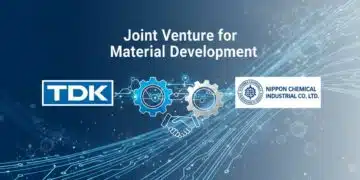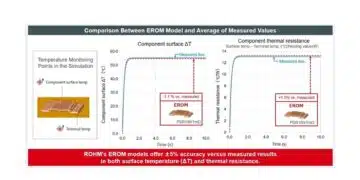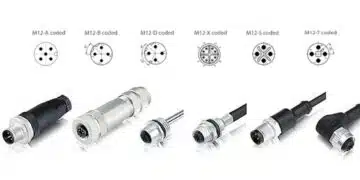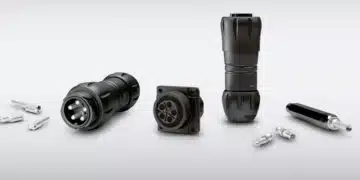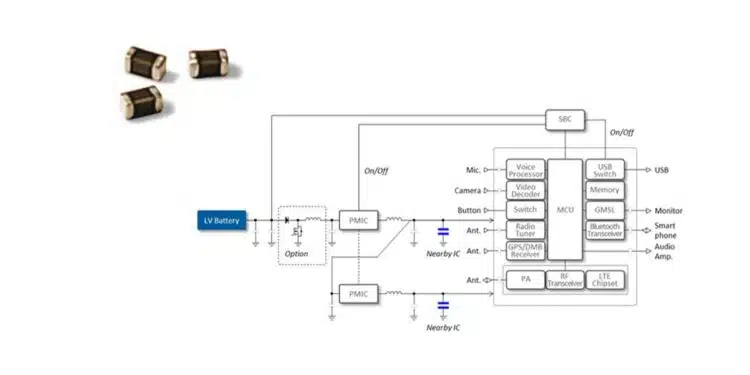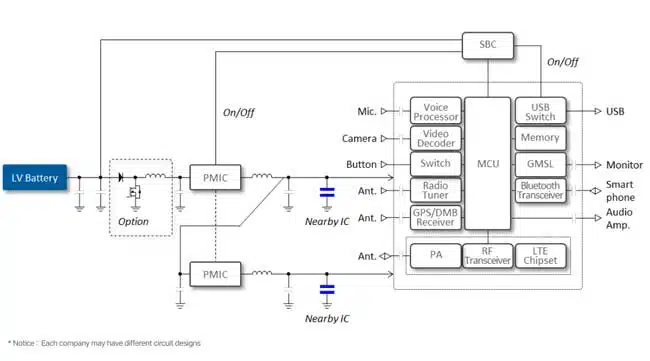Samsung Electro-Mechanics has launched the world’s first MLCC ceramic capacitors for In-Vehicle Infotainment with 0603 inch X6S 22uF 10V specifications.
Samsung Electro-Mechanics developed and commenced mass production of the CL10X226MP91IN# multilayer ceramic capacitor with a capacitance of 22uF at 10V in a 0603 inch (1.6×0.8mm) size, X6S (-55 to 105℃) for In-Vehicle Infotainment. Samples are also available.
As vehicles become more advanced, the demand for miniaturization of MLCCs and expanded capacitance continues to grow.
This product extends the voltage capability of existing X6S lineup products from 6.3V to 10V while maintaining the same size and capacitance, meeting both the voltage stability and miniaturization requirements of the application.
Samsung Electro-Mechanics has applied proprietary ceramic and electrode material refinement techniques and ultra-precision stacking technologies to expand its lineup of compact, high-capacitance MLCCs for IVI applications and continues to supply these products.
| Samsung | Size(inch/mm) | Capacitance | Rated Voltage | TCC |
| CL10X226MP91IN# | 0603/1608 | 22㎌ | 10Vdc | X6S |
(X6S : Capacitance change rate in the temperature range of -55°C to 105°C : ±22%)
Application Example: Automotive AVN (Audio Video Navigation)
Automotive AVN (Audio Video Navigation) enhances drivers’ visibility and provides an immersive entertainment experience through advancements in display technologies such as HUD (Head-Up Display) and curved screens, as well as strengthened connectivity. Furthermore, as autonomous driving becomes more widespread, various advanced technologies such as AVN system integration, voice control, and artificial intelligence are increasingly being adopted.
Samsung Electro-Mechanics offers a lineup of high-reliability, compact, high-capacitance MLCCs for power stabilization of high-performance ICs applied to AVN, and continues to expand its supply.
MLCC Trend : Miniaturization, Voltage Stability
- High Reliability
- High Capacitance
→ Recommendation dielectric type: X6S
| Size(inch/mm) | Rated Voltage[Vdc] | TCC | Capacitance | Part Number | MPStatus | SampleAvailability |
| 0603/1608 | 10Vdc | X6S | 22uF | CL10X226MP91IN# | NEW | Available |
| 0603/1608 | 6.3Vdc | X6S | 22uF | CL10X226MQ91IN# | In MP | Available |
| 0402/1005 | 6.3Vdc | X6S | 4.7uF | CL05X475MQQ1IN# | In MP | Available |
| 0201/0603 | 10Vdc | X6S | 1uF | CL03X105MPR1IN# | In MP | Available |
| 0201/0603 | 6.3Vdc | X6S | 1uF | CL03X105MQR1IN# | In MP | Available |
*The products are AEC-Q200 certified automotive-grade MLCCs designed specifically for IVI (In-Vehicle Infotainment) applications.




